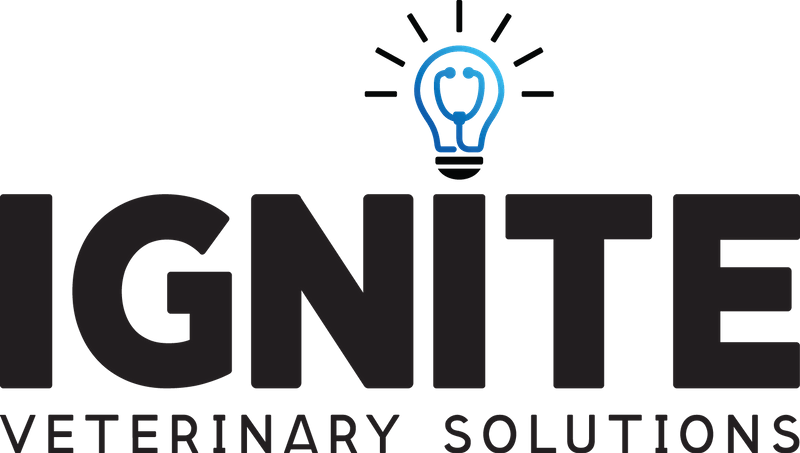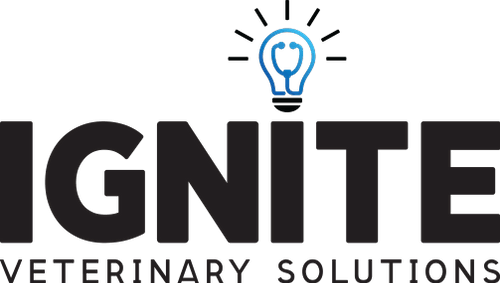I often hear practice owners and managers say that their particular practice can’t afford training for their employees, either in dollars or time.
Some reasons I hear frequently are:- “We’re so busy that we can’t afford the time it takes to train our staff right now.”
- “If I can’t see an ROI on training in one quarter or less, I can’t justify the expense.”
- “I’m waiting to get fully staffed with the right people before I invest in training."
- “Our revenue is down, so training is the first expense we have to cut.”
- “I’ve tried training staff before and they just leave us after I’ve invested in them, so I’m not going to do that again!”
As you might expect, I’d say your hospital can’t afford NOT to up-skill your employees.
A quality learning environment should empower, educate and provide clarity around the roles in your hospital. We have all experienced the very common veterinary training method of “tribal knowledge sharing” for new employees. You know, the practice of putting a wide-eyed new staff member, who yesterday was working in a whole different industry and today is the face of your hospital, into a “sink-or-swim” immersion program (no pun intended) where a more tenured employee shares secret insider information on how to best survive in the role. Sometimes this is successful, and sometimes it results in your frustration and disappointment that the new employee “just doesn’t get it” and off you go to search for a suitable replacement.
Let’s break these five objections down.
- “We’re so busy that we can’t afford the time it takes to train our staff right now.”
Sometimes the feeling of being busy is actually busy, and sometimes the feeling of busy in a veterinary practice is inefficiency. Effective training can make a busy hospital run even more efficiently as more team members are cross-trained, staff have greater clarity and don’t have to consult the veterinarian or others as often to perform a task. In some cases, staff will gain knowledge that can generate more revenue for the practice. We know that 79% of employees say that training and development is extremely important to them. This is particularly true with younger employees. They expect it. When you are very busy and don’t invest back in your people, you may be inadvertently increasing your employee turnover. - “If I can’t see an ROI on training in one quarter or less, I can’t justify the expense.”
You will only get a quantifiable ROI on your learning investment if you take the steps to measure it. Historically we have not been good at measuring things like training results in the veterinary space. Some results will take longer than a single quarter to achieve, but will more than pay for themselves as learning becomes behavior change. Set up your training to be measured. An example might be, if you are training your CSRs on appointment capture, take the time to establish and measure your appointment capture rates before the training and then at regular intervals after the training. Don’t let this be a one and done initiative. Use your regular measurements to reinforce and continue to demonstrate your hospital’s focus on changing this behavior over time. - “I’m waiting to get fully staffed with the right people before I invest in training."
Many veterinary hospitals are blessed with a long-term stable staff, but others are not. For those that are in pain due to being understaffed and/or having the wrong staff for their needs, let’s look at how learning could help. First, a solid hospital training effort is something that can be used as a recruiting and retention tool. Candidates will be attracted to your practice knowing you have the tools to help them be successful in their new role. You may never get the “perfect” staff, but training may help every employee maximize their contribution to your ecosystem while you look for reinforcements. - “Our revenue is down, so training is the first expense we have to cut.”

Training is often seen as a “nice to have” and not the “must have for survival” that it can be. If revenue is down, focusing on a training program that will up-skill your team can be the catalyst you are looking for to treat the revenue blues. Clarity, knowledge and focus on what matters most to the practice can only be achieved through training and good communications. Every role in the hospital is capable of revenue generation. Use training to help them see their role in the hospital’s success. - “I’ve tried training staff before and they just leave us after I’ve invested in them, so I’m not going to do that again!”
There is a famous saying by Henry Ford, “The only thing worse than training your employees and having them leave is not training them and having them stay.” This is very true in the veterinary profession too. If we don’t train because we don’t want them to leave with our learning investment, then we doom ourselves to creating a less productive employee pool. You are going to lose some superstars along the way, but wouldn’t it be better to have the benefit of that top talent for the time you have them and have a formula to grow new stars than to withhold learning and be saddled with teams that aren’t interested in improving?
The environment has changed in the modern world of veterinary learning. We have new learning techniques (like microlearning), platforms, and tools all aimed at developing our people and elevating the profession. Find one that’s right for your practice, establish the goals you want to achieve from the learning program, measure the before and after results, and find ways to reinforce the learning along the way. Your team will appreciate your investment in their success, and job seekers will be attracted to your commitment to learning and development.
Happy Learning!


